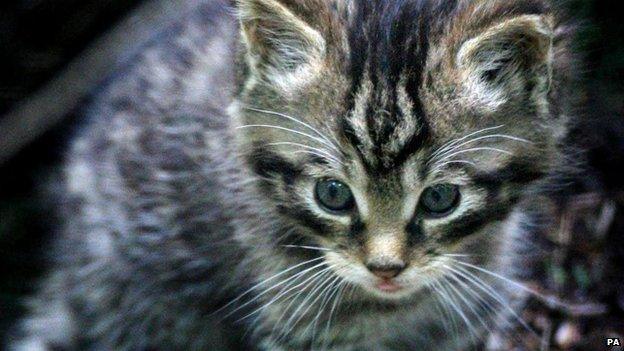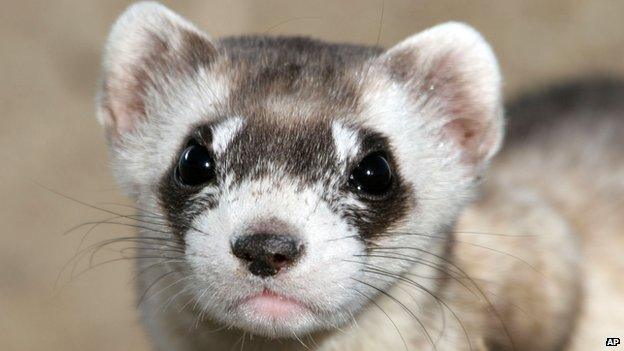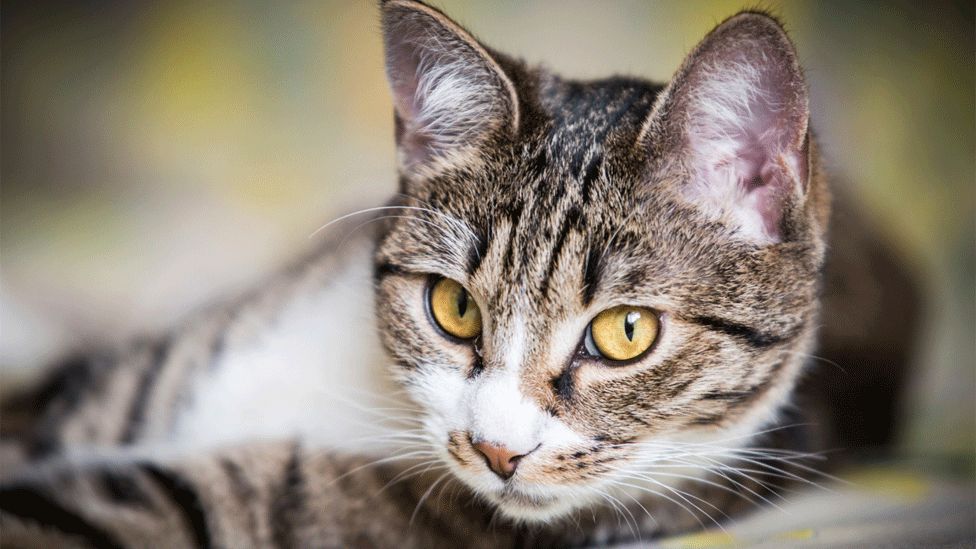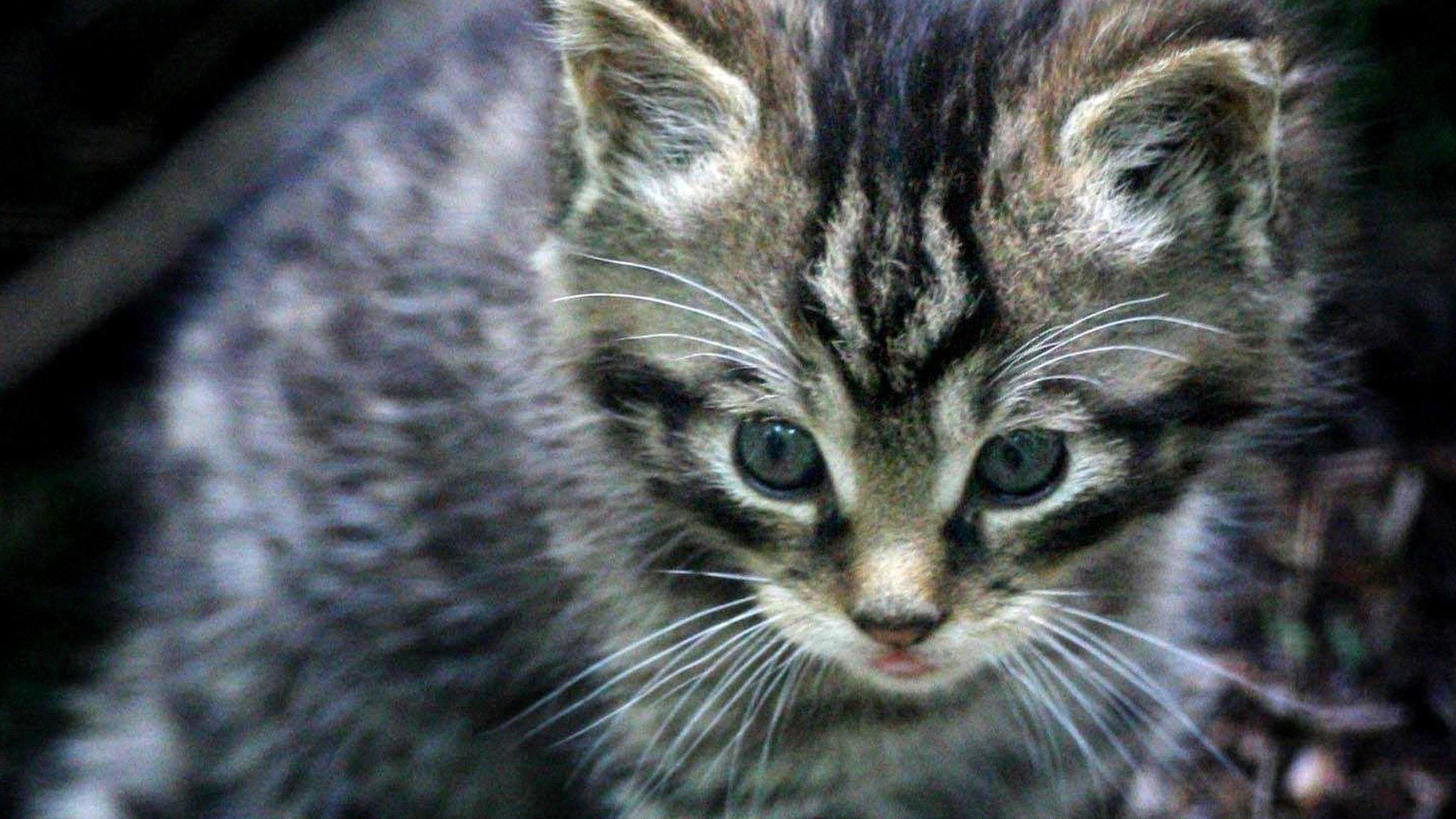Scottish wildcat captive breeding plan defended
- Published

Conservation groups have defended a proposed Scottish wildcat captive breeding programme.
It came after an animal welfare charity claimed trapping wildcats to breed them in zoos harmed the species' chances of survival.
Captive breeding forms part of the Scottish Wildcat Conservation Action Plan unveiled in September 2013.
Scottish Natural Heritage and the Royal Zoological Society of Scotland said it was necessary to conserve the cats.
They are among 30 organisations backing the action plan.
The Scottish wildcat faces extinction because of breeding with domestic and feral cats, disease, habitat loss and being run over on roads.

SNH and RZSS say some breeding in captivity is necessary to 'reinforce' wildcat populations
The Captive Animals' Protection Society (Caps) has criticised the captive breeding plan, and instead supports the use of the the Wildcat Haven, a 500 square mile area that covers parts of the Ardnamurchan and Morvern peninsulas.
The peninsulas in north-west Scotland have few people, quiet roads and large areas of habitat favoured by wildcats.
Nicola O'Brien, campaigns director at Caps, said: "Taking animals from the wild to stock zoo exhibits is something which people nowadays see as unacceptable, a throwback to a bygone era where animal collections had nothing to do with animal welfare.
"Concepts such as using female cats as bait for males or throwing live animals into a cage to be eaten are barbaric ideas that also belong buried in the past."
She added: "Ignoring the substantial evidence from the Wildcat Haven project that threat-free zones can be effectively created around wildcat populations, this SNH/RZSS plan is unjustifiable, clearly little to do with conservation and everything to do with these zoos stocking their cages."
'Strongly oppose'
Emily O'Donoghue, director of the Wildcat Haven project, said: "Wildcats living here are safe from any threat and much loved by the entire community.
"We will strongly oppose any effort to remove wildcats from the haven region, and will be opening several new sites in the hope of protecting other wildcats against these plans."
But supporters of the Scottish Wildcat Conservation Action Plan have argued that it represents the majority view on conservation actions to save wildcats, and say the capture of some genetically important at-risk wildcats was necessary to conserve the species.
Breeding would happen at places such as the Highland Wildlife Park at Kincraig in areas not accessible to the public.
The plan aims to halt the decline of wildcats within six years.

Black-footed ferrets are among other species bred in captivity
RZSS said: "If we do not bring at least some of the remaining wildcats into the lifeboat that is the 21st-century zoo community, we will lose the species from these islands.
"This exact same approach was applied to Californian condors, black-footed ferrets, red wolves, Arabian oryx and European bison.
"All had individuals pulled into captivity, all became extinct in the wild, all have been the subject of reintroduction projects and once again exist as wild animals."
SNH said captive breeding would "reinforce" populations in the wild.
Andrew Bachell, director of policy and advice at SNH, said: "This work will use existing captive cats and would supplement the captive cat population with a small number of additional wildcats to avoid inbreeding, and ensure any breeding programme has a robust genetic base."
SNH added that work to establish six priority areas for Scottish wildcat conservation would start shortly.
The Angus Glens, Strathbogie in Aberdeenshire, Strathavon in Moray and Morvern, Strathpeffer and Dulnain in the Highlands are the six areas.
- Published20 February 2015

- Published6 February 2015

- Published11 November 2014

- Published23 July 2014
